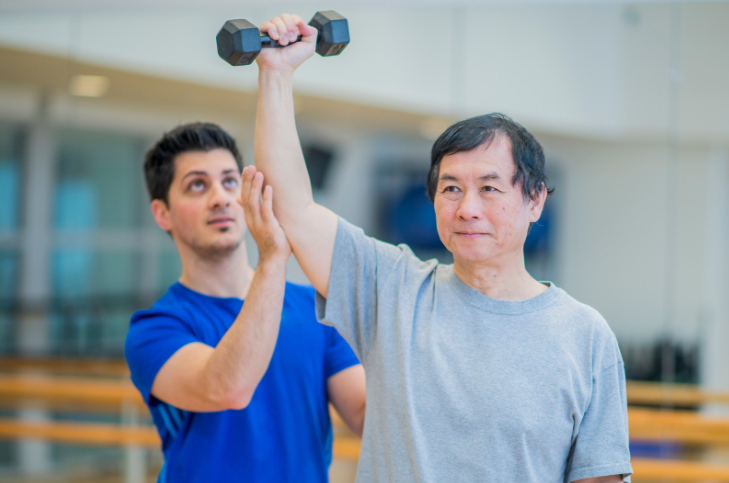If you’re a man over the age of 45, you may be concerned about the health of your prostate. The prostate is a small gland located just below the bladder, and as men age, it can become enlarged, leading to a condition known as benign prostatic hyperplasia (BPH). This can cause symptoms such as frequent urination, difficulty starting or stopping urination, and a weak urine stream. While there are medical treatments available for BPH, there are also some simple exercises you can do to help keep your prostate healthy. In this blog post, we’ll discuss the top 10 15 second exercise to shrink prostate.
15 Second Exercise to Shrink Prostate
The idea that exercise can shrink the prostate is based on the premise that regular physical activity can improve overall health, including the health of the prostate. The prostate is a muscular gland, and like other muscles in the body, it can benefit from regular exercise. However, the concept of a 15-second exercise specifically targeting prostate shrinkage may need further examination.
The prostate, being a gland, is made up of mostly glandular tissue and smooth muscle. It is not a skeletal muscle that can be easily targeted with short bursts of exercise. Therefore, the idea of a 15-second exercise directly shrinking the prostate may be oversimplified. However, regular physical activity can have indirect benefits for prostate health.
Regular exercise, such as aerobic activities, strength training, and flexibility exercises, can contribute to overall health and well-being. This can have a positive impact on the body’s hormonal balance, blood flow, and immune function, which may indirectly support prostate health. Read below the quick and easy Prostate-Shrinking Exercise in 15 Seconds.
1. Kegel Exercises
Kegel exercises are often recommended for women to strengthen their pelvic floor muscles, but they can also be beneficial for men. To do Kegel exercises, simply contract and hold the muscles you would use to stop the flow of urine. Hold for five seconds, then release. Repeat this 10 times, and try to do this exercise three times a day.
2. Squats
Squats are a great way to strengthen the muscles in your lower body, including those around the prostate. To do a squat, stand with your feet shoulder-width apart, then bend your knees and lower your body as if you were going to sit in a chair. Keep your back straight and your chest up as you lower yourself down, then return to a standing position. Do 10 squats in 15 seconds for a quick and effective workout.
3. Pelvic Tilts
Pelvic tilts are a simple exercise that can help strengthen the muscles in your pelvic area. To do pelvic tilts, lie on your back with your knees bent and your feet flat on the floor. Tighten your abdominal muscles and tilt your pelvis upward, then release. Repeat this movement 10 times in 15 seconds for a quick and effective workout.
4. Hip Flexor Stretch
Tight hip flexor muscles can contribute to prostate problems, so it’s important to keep them flexible. To do a hip flexor stretch, kneel on one knee with the other foot in front of you. Lean forward, keeping your back straight, until you feel a stretch in the front of your hip. Hold for 15 seconds, then switch sides.
5. Bridge Exercise
The bridge exercise is a great way to strengthen the muscles in your lower back and buttocks, which can help support your prostate. To do a bridge, lie on your back with your knees bent and your feet flat on the floor. Lift your hips off the ground, keeping your back straight, then lower them back down. Do 10 bridges in 15 seconds for a quick and effective workout.
6. Yoga
Yoga is a fantastic way to improve flexibility and strength, and many poses can specifically target the muscles around the prostate. Try incorporating poses such as the child’s pose, the cobra pose, and the pigeon pose into your routine for a prostate-friendly workout.
7. Walking
Walking is a simple and effective way to keep your prostate healthy. Aim to walk for at least 15 minutes a day, and try to incorporate some hills or stairs into your route for an added challenge.
8. Cycling
Cycling is another great way to keep your prostate healthy, as it helps to improve blood flow to the pelvic area. If you don’t have a bike, you can also use a stationary bike at the gym for a quick and effective workout.
9. Swimming
Swimming is a low-impact exercise that can help improve your overall fitness and keep your prostate healthy. Try to swim for at least 15 minutes a day for maximum benefits.
10. Tai Chi
Tai Chi is a gentle form of exercise that can help improve balance, flexibility, and strength. It’s also a great way to reduce stress, which can have a positive impact on your prostate health.
Conclusion
There are many simple exercises you can do to help keep your prostate healthy. By incorporating these 10 exercises into your daily routine, you can help shrink your prostate and reduce the risk of developing BPH. So why not take 15 seconds out of your day to do something good for your prostate? Your body will thank you for it!
If you enjoyed this article, you may also want to read this article on Top Foods for a Healthy Prostate.
*This information is not intended to serve as a substitute for professional medical or dietary advice tailored to individual needs.
Dr. Nicolette Natale is a physician, with a background in Psychology, General Medicine, and English Literature, combining her expertise to provide readers with the most accurate, easy-to-understand, and comprehensive information regarding healthcare. She received her Doctorate in Osteopathic Medicine from Nova Southeastern University, and her bachelor’s in English Literature and Psychology from the University of Miami. Dr. Natale seeks to empower individuals with knowledge, fostering a greater understanding of holistic health and encouraging a proactive approach to well-being




